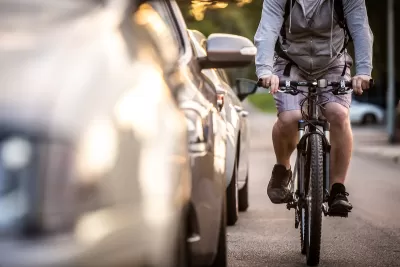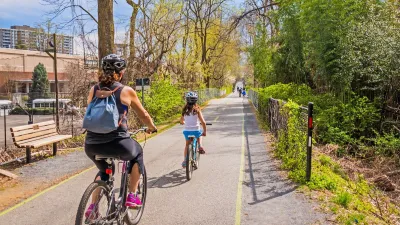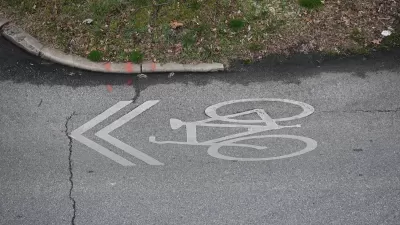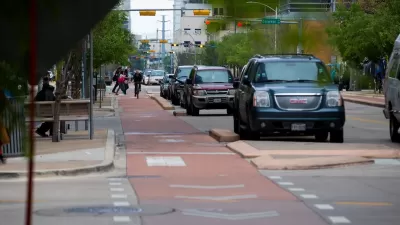The technology could enable cars and bikes to communicate and reduce collisions.

In an opinion piece in Streetsblog USA, Laszlo Virag describes how ‘vehicle-to-everything’ technology, known as V2X, could improve traffic safety and help people on bikes and in cars ‘talk’ to each other. “The principle of V2X communication is very simple: ten times a second, cars send out invisible radio signals that broadcast the vehicle’s size, current position, speed and direction.”
Expanding the technology to bikes, Virag argues, could “provide critical protection for their riders by prompting V2X cars to display a warning right in front of the driver when a cyclist is about to cross their path.”
Virag adds that the technology could be installed at intersections and on other infrastructure and vehicles. “Best of all, all that anonymized data can then be recorded and aggregated, after which it can be shared with cities to help plan new bike and pedestrian infrastructure, or with navigation apps to give vulnerable road users more data on which routes safe.”
Virag cautions that “none of this technology replaces the need for separated bike lanes — and no cyclist should be blamed for a crash simply because they don’t have a V2X enabled bike that can “talk” to a V2X enabled driver.” But the technology could help improve safety in places with little bike infrastructure. “As cities catch up on infrastructure, even a very low level of V2X penetration can give city leaders the detailed data they need on traffic flow, traffic patterns, and even near-miss incidents.”
FULL STORY: Opinion: How Letting Bikes ‘Talk’ To Cars Can Save Lives

Maui's Vacation Rental Debate Turns Ugly
Verbal attacks, misinformation campaigns and fistfights plague a high-stakes debate to convert thousands of vacation rentals into long-term housing.

Planetizen Federal Action Tracker
A weekly monitor of how Trump’s orders and actions are impacting planners and planning in America.

San Francisco Suspends Traffic Calming Amidst Record Deaths
Citing “a challenging fiscal landscape,” the city will cease the program on the heels of 42 traffic deaths, including 24 pedestrians.

Defunct Pittsburgh Power Plant to Become Residential Tower
A decommissioned steam heat plant will be redeveloped into almost 100 affordable housing units.

Trump Prompts Restructuring of Transportation Research Board in “Unprecedented Overreach”
The TRB has eliminated more than half of its committees including those focused on climate, equity, and cities.

Amtrak Rolls Out New Orleans to Alabama “Mardi Gras” Train
The new service will operate morning and evening departures between Mobile and New Orleans.
Urban Design for Planners 1: Software Tools
This six-course series explores essential urban design concepts using open source software and equips planners with the tools they need to participate fully in the urban design process.
Planning for Universal Design
Learn the tools for implementing Universal Design in planning regulations.
Heyer Gruel & Associates PA
JM Goldson LLC
Custer County Colorado
City of Camden Redevelopment Agency
City of Astoria
Transportation Research & Education Center (TREC) at Portland State University
Jefferson Parish Government
Camden Redevelopment Agency
City of Claremont





























